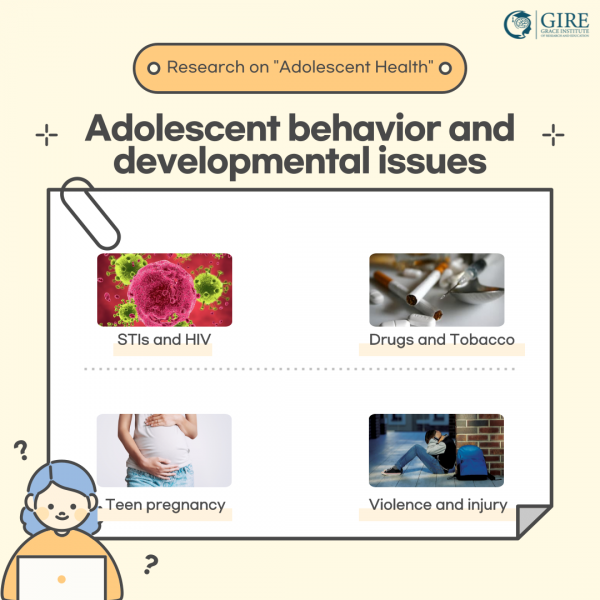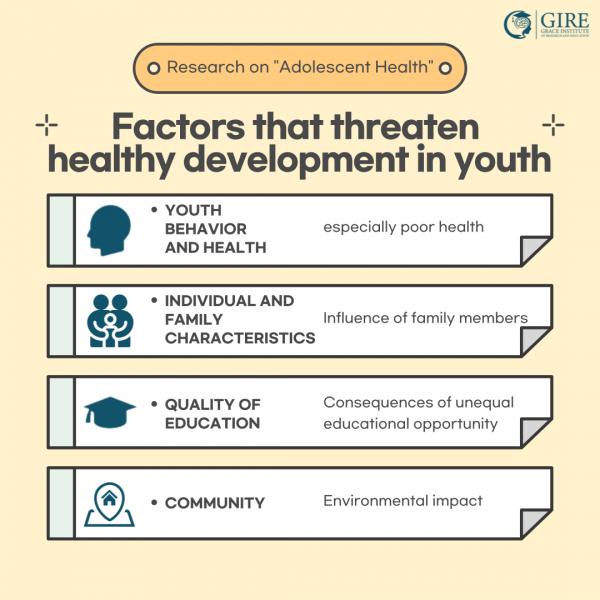
Hello, GIRE!
According to the American public health journal JPHMP, healthy adolescent development strategies can prevent a wide range of adolescent health risks.
Healthy adolescent development strategies are based on the premise that adolescents are "resources to be developed, not problems to be solved."
Efforts to promote healthy adolescent development involve multiple disciplines, including psychology, sociology, nursing, public health, social work, and medicine.
At GIRE, we'll show you how to research professionally with a professor from the University of Texas, School of Public Health.

[Adolescent behavior and developmental issues]
Adolescent developmental issues that public health works to address include STIs and HIV, drugs and tobacco, pregnancy, violence, and injury.
75% of adolescent deaths are related to social and behavioral factors, and lifestyles formed during adolescence often persist into adulthood, affecting long-term health and chronic disease risk.
Therefore, the role of public health is to intervene during adolescence to promote a positive future for young people in the long term.
[Factors that threaten healthy development in youth]

Youth behavior and health (especially poor health), individual and family characteristics, quality of education, and the community in which they live are the biggest risk factors for healthy development.
Engaging in risky behaviors during adolescence is common, and future demographic changes in the youth population (especially the proportion of youth expected to grow up in poverty) will pose even greater challenges to promoting healthy development for all youth.
[A Public Health Approach to Youth Development]
The mission of public health is defined as "fulfilling society's interest in assuring conditions in which people can be healthy.”
Youth health issues are different from typical public health issues, such as acute or chronic illnesses.
Therefore, rather than focusing solely on reducing risk factors for morbidity and mortality, the youth development approach focuses on building resilience. In other words, the goal is to help youth successfully transition into adulthood through supportive relationships and opportunities for positive experiences.
[Environmental medicine research: Paula Cuccaro]

GIRE is supporting a research experience with Professor Paula Cuccaro, Department of Public Health, College of Health and Behavioral Sciences at the University of Texas Health Science Center at Austin, to delve deeper into "adolescent health promotion.”
▶Research Interests: #Ethnicity #Youth_Development #Developmental_Psychopathology #Family_Studies #Cognitive_Psychology #Social_Development
▶Recommended students:
Students who wish to pursue a medical career. Students interested in the physical, mental, and emotional health of children and adolescents.
Dr. Paula Cuccaro's current research interests include:
▶Using the R = MC heuristic to understand barriers to and facilitators of implementing school-based physical activity opportunities: a qualitative study (2024) ▶Human papillomavirus (HPV) vaccination in males: Associations of HPV-related knowledge and perceptions with HPV vaccination intention among Korean mothers of boys (2023) ▶Changes in criminal justice involvement among renters in Low-Income Housing Tax Credit properties (2023)
|
 Click here to book
Click here to book